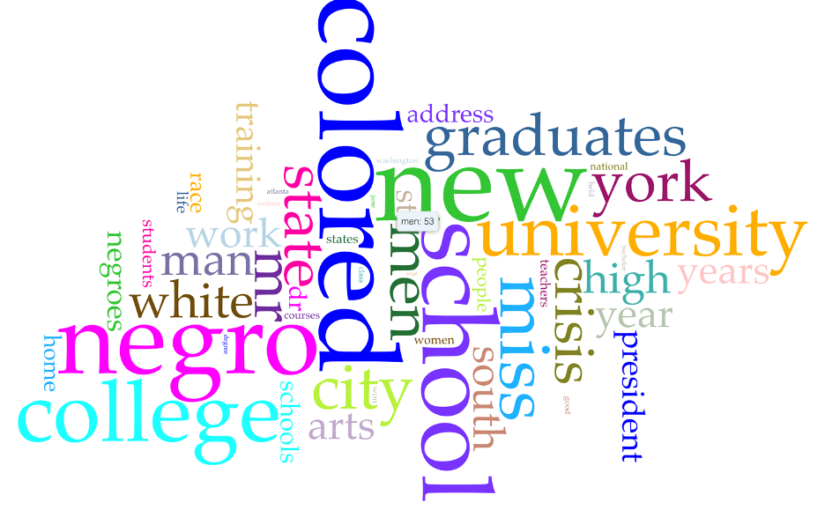Research Question: How often did The Crisis cover education?
This examination of The Crisis uses only one issue, volume fourteen, number three of The Crisis, to explain how Voyant Tools can contribute to an analysis of how often The Crisis covered education. Voyant Tools provides numerous visualizations that arrive to users through data extraction taken Text Encoding Initiative data. Using the TEI data provided by the particular issue of The Crisis allows users to upload the data to Voyant Tools’ web-based platform.
Figure 1 – Word Bubble
A default visualization of Voyant Tools, the word bubble, gives the first glimpse into the prominence of specific terms within the particular issue of The Crisis. The bubble provides terms that jump out: college, students, schools, graduates, teachers, university, bachelor. The size of the terms within the bubble illustrates the frequency of the term within this issue. The word bubble shows that educational topics hold a significant role within this issue of the publication.
Figure 2 – List
A less visualizing appeal, but data-centered use of Voyant, the list of all terms within the issue, gives raw data on the frequency of different terms. The list of terms contains each term used within the issue and ranks them from most frequent to least frequent, and provides how many times Voyant found the term within the TEI data. The most frequently used ten words in this issue demonstrate how prevalent purely educational terms appear within the issue.
Figure 3 – Trends
Trends serves as a concluding example of the numerous tools found within Voyant. Trends enables a user to explore where particular terms appear within an issue of The Crisis. Using the seven educational terms that appeared in the word bubble, Voyant provides evidence that this issue focused on education throughout the issue. However, the focus on education skewed much toward the first half of the issue.
Voyant Tools provides users with helpful digital tools for analyzing literary data. Researchers interested in literary analysis should give attention and time to Voyant Tools to determine how it may aid their particular research projects.
